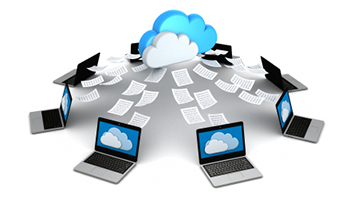Breaking News: Downtime Kills Small Businesses

Breaking News: Downtime Kills Small Businesses
Downtime is bad news for any business whether big or small.
A recent two-hour New York Times’ downtime occurrence sent Twitter ablaze and their stock price plummeting.
Google going down for one to five hours resulted in lost revenue up to $500,000 and decreased overall web traffic by 40%.
We know what you’re thinking. Holy crap, Google makes $100,000 an hour? Yeah… insane, huh?
While the hourly cost of downtime for a small-to-medium sized business won’t be nearly as large as that astronomical Google figure, downtime is often more detrimental to smaller companies. Smaller enterprises are more susceptible to downtime and are neither large nor profitable enough to sustain its short and long-term effects.
Downtime Leads to Unhappy/Unproductive Employees
Even the happiest of employees become dissatisfied when they can’t perform basic day-to-day job functions or properly service customers or clients.
While some employees may use downtime as an excuse to lean back, put their feet up, and comfortably collect their hourly pay, we’re talking about those employees who come to work to actually work.
And don’t forget your IT guy or tech crew. They can’t necessarily sit back and twiddle their thumbs when downtime occurs because they’re typically taking the brunt of the storm. They will ultimately grow tired of the daily routine of having to put out fires and having neither the additional manpower nor resources to change things for the better.
These things lead to high employee turnover and the expenses that come with training and re-training a revolving door of employees.
Downtime Leads to Customer Dissatisfaction
Customers and clients grow weary whenever critical components of your operations – or the services they either expect or pay for – cannot be accessed.
Nearly 50% of customers will move on to a competitor if they encounter downtime of five minutes or more. These customers represent significant lost revenue.
While some suggest this is a bigger problem in the retail sector, other types of businesses are impacted as well. Have you ever clicked a link from search engine results only to quickly bolt when the page didn’t load, you couldn’t complete an online transaction, or you were greeted with a “Technical Difficulties – Be Back Up Soon!” message?
Did you give up on finding what you were looking for or did you wait it out? You did neither. You went back to Google and found someone else offering a similar service or product that satisfied your yearning for instant gratification.
Downtime Ruins Your Reputation
One of the most commonly overlooked consequences of downtime is the hit your company’s reputation takes online. In this age of social media, one person’s bad experience is broadcast to dozens or even hundreds of followers. Bad news spreads faster than ever and has lasting repercussions.
“It takes 20 years to build a reputation and five minutes to ruin it. If you think about that, you’ll do things differently.” — Warren Buffet.
Protect Your Bottom Line
The challenge for small businesses has always been how to minimize single-point-of-failure downtime using their limited IT resources. This is why downtime kills so many small businesses. They can’t prevent it and they can’t react quickly enough.
Thankfully, there are end-to-end business continuity solutions available today that integrate Remote Monitoring and Management (RMM) software, 24/7 access to a Network Operations Center (NOC), and advanced backup and disaster recovery solutions to alleviate this issue.
Not only do these methods minimize downtime and get businesses back up and running quickly, but they can reduce the cost of technology infrastructure maintenance by as much as 80 percent.
It’s time that small businesses stop being victims to the silent killer that is downtime.
Contact us at SpeedWise IT Services




